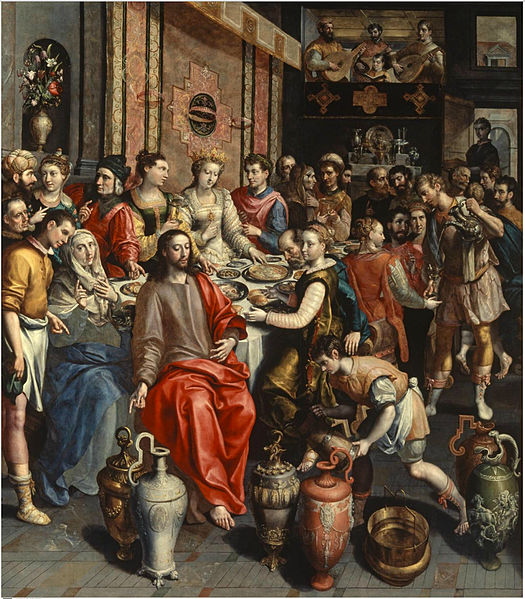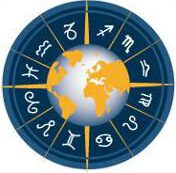The Wedding Feast at Cana in Art and Astrology. The Age of the European Renaissance as a Scorpio Age in Painting, Art and Architecture.
This article is part of a long-term study – please pass by to see how far I`ve got after a couple of weeks, months or years.
Related articles: Bernini and the Rape of Proserpina, Max Ernst`s sculpture Capricorn. Guggenheim Bilbao in Scorpio Pisces, Scorpio as the sign of sculpting,
Pluto as an indicator for qualities of the different eras in culture and art

Pluto is the planetary indicator for the human capacity to transfer perception and experience into information and stored memory. Pluto so manifests the imprint of patterns of perception, experience and of hormonal reactions onto the perceived stimuli.
The sign of Scorpio, its planetary ruler Pluto and the 8th house and organ in the human system stand for the hardware of perception aka the brain.
Medieval astrology had concluded that Scorpio represented the astrological corresponding sign of sexuality and the sexual organs. But a deeper study of Scorpios and of Plutos functions has to come to the conclusion that their contribution to sexuality is through reacting onto perceived stimuli, by “brewing” and sending out particular hormonal reactions the composition of which is decided by the programming of individuals through information stored in their genetic hardware and the overlay of acquired and stored information about sexuality.
Hence Scorpios and of Plutos roles as the corresponding factors of alchemy, chemistry and hormonal production.
The Age of the European Renaissance as a Scorpio Age
The European Renaissance was developed between the Great Mutational Conjunction of 1306 that started the Scorpio/Water Age and the Great Mutational Conjunction of 1603 that triggered the Sagittarius/Fire Age. With a full span of 297 years this age was an exceptionally long period compared to the regular 179 years in the cycle of such Super Conjunctions of the two planets.
The following table shows an overview of the last 3000 years in the cycle of the Great Mutational Conjunctions of Jupiter and Saturn. Each of the initial conjunctions manifested the introduction of a new period through the fact that the conjunction occurred in a new element after a series of 6 (normally 7) or more consecutive conjunctions in the same astrological element (sequence: fire, earth, air, water). The change of element is why they are called “Great Mutational Conjunctions” or “Revolutions of the Cycle of Great Conjunctions”.
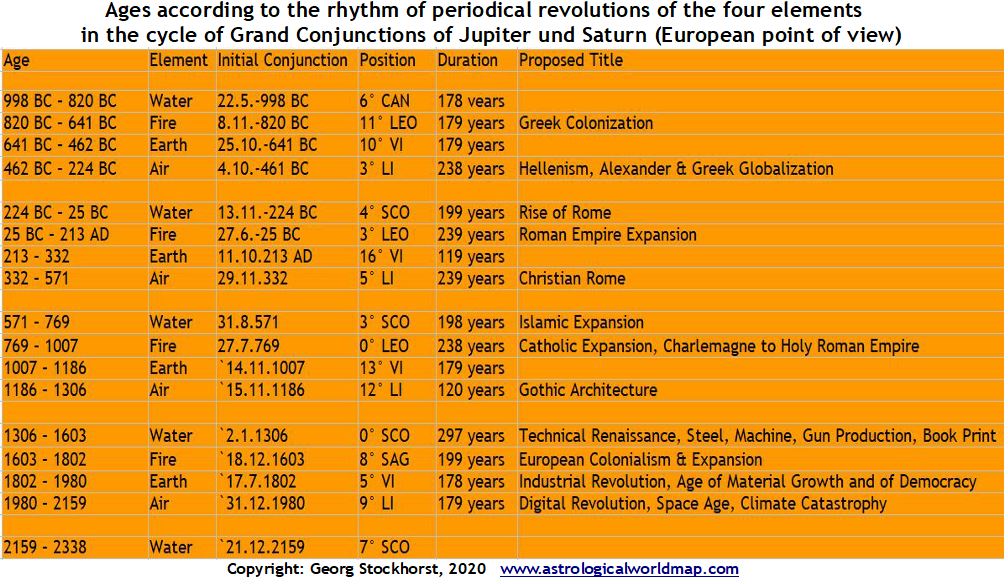
Here is a short summary that explains how this “irregularity” of the span of this period came to pass:
- The Great Mutational Conjunctions of Jupiter and Saturn usually occur in one and the same of the 4 “astrological elements” (sequence; fire, earth, air, water) over “regular” periods of 179 years with nine conjunctions of which 7-9 occur in the same element and only the 2nd or 3rd ones occur in a sign of the element of the preceding age.
- astrology assumes that the first occurrence of a mundane or astronomical event, astrological aspect, ingress or other transit event initializes the birth of a new phenomenon, phase, being or object.
- some “astrological” authors have suggested to simplify the astrology of ages of based on Great mutational conjunctions by simply using 200 year phases instead of the actual precise astrological transit events. Such type of methods gives up the focus on the precision of astrological interpretation of transits and of initialization and birth charts.
- what is of greatest importance here is the fact that simplifying astrological research for the convenience of an easy calculation and overview over average periods the fuller holistic potentials of differentiation and critical analysis of scientific astrology are not just given up. They are overwritten, extinguished and replaced for the use of astrological terminology in easy standard occultism, commercial predictionism and manipulation of the astrology market along with its consumers.
- Lets take a quick look at the facts in regard to the relatively long period of the “Age of the European Renaissance”:
- the Great conjunction of Jupiter and Saturn on 2nd January 1306 at 0°46 Scorpio initialized a new period (1305-1602) that consisted of 15 Saturn-Jupiter conjunctions (instead of 9) over 297 years (instead of 179) with 4 (instead of 1 or 2) out of the first 6 of them not in water but in air signs aka the element of the preceding air age.
- this “irregularity” itself represents and contains a lot of precise information. The unwillingness or inability of astrologers to deal with precise astronomical data is of course one of the biggest obstacles to astrological interpretation.
- the astrological period in which the so called “European Renaissance” unfolded began with the conjunction of 1306 in the water element after a period in of 6 consecutive conjunctions in the air element from 1186 until 1286.
- the initial conjunction in the “new” water element of 1306 in Scorpio was followed by 2 consecutive conjunctions in the air element in 1325 (Gemini) and 1345 (Aquarius). The next conjunction of 1365 in Scorpio again occurred in the water element but was again followed by 2 conjunctions in the air element in 1385 (Gemini) and in 1405 (Aquarius) before 9 consecutive conjunctions in the water element from 1425 to 1583.
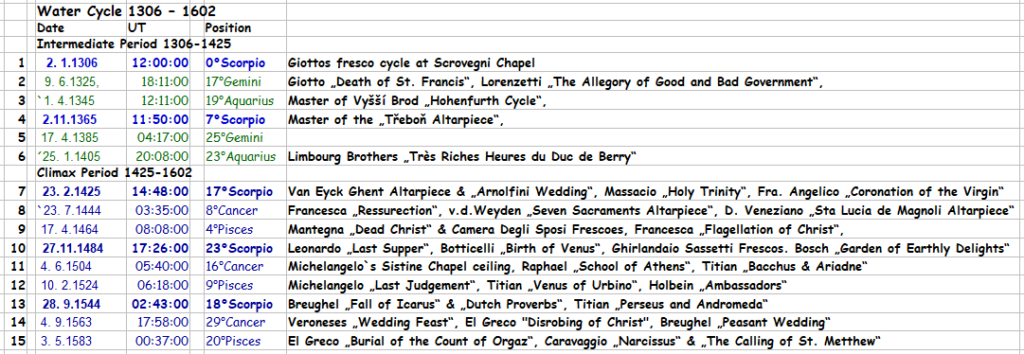
The Transformation of Water into Wine at the Wedding Feast at Cana
The transformation of water into wine at the Wedding at Cana in Gallilee is the first miracle attributed to Jesus in the Gospel of John. It is not mentioned in the other 3 so-called synoptic gospels of Mathew, Luke and James.
“John 2:1-11 states that Jesus was at a wedding in Cana with his disciples. Jesus’ mother (unnamed in John’s Gospel) told Jesus, “They have no wine,” and Jesus replied, “Woman, what concern is that to you and to me? My hour has not yet come.” His mother then said to the servants, “Do whatever he tells you.” (John 2:3-5). Jesus ordered the servants to fill containers with water and to draw out some and take it to the chief steward (waiter). After tasting it, without knowing where it came from, the steward remarked to the bridegroom that he had departed from the custom of serving the best wine first by serving it last (John 2:6-10). John adds that: “Jesus did this, the first of his signs, in Cana of Galilee, and it revealed his glory; and his disciples believed in him” (John 2:11).” from the wikipedia article.
Just like most places mentioned in Jesus` life the exact location of “Cana in Galilee” has been subject to debate among tourist guides and scholars.
The Wedding Church at Kafr Kanna in Libra the sign of marriage
The Wedding Church at the town of Kafr Kanna was built by the Franciscan order at the site of a 4th century CE synagoge supposed to coincide with the place where the miracle the turning of water into wine was performed.
The structure was built between 1881 and 1905 and consecrated on September 30, 1906 with the Sun in Libra, Libras sign ruler Venus in Scorpio and a conjunction of the Moon with Saturn at ca 10° Pisces.

- Astrogeographical position of the Wedding Church for morphogenetic field level 4 (exact position) which describe the church itself: the construction site has both resonance coordinates in Libra the sign of love relationships, parties, openness for relationship, angels, harmony, balance between partners, beauty, prostitution, mirrors, dancing and surely the ultimate one and only astrological resonance sign of wedding, marriage, wedding parties as such.
- My experience in systemical astrogeographical field study is that Libra represents the most frequent astrological resonance sign in sites dedicated to marriage. Its aspects as the sign of beauty, stage presentation and decoration makes it ideal for bridal wear.
- Astrogeographical position of the Wedding Church for morphogenetic field level 3 (surrounding area) which describe the surrounding town area where the church is located: this area has both resonance coordinates in solid fixed water sign Scorpio the sign of of transformation, alchemy, chemistry, visualization, artwork and sculpting. The position in Scorpio surely represents a strong image for with the ideal concept of visualization of an alchemical transformation of one liquid into another.
- As the 8th sign in the systemical structure of the zodiac and the 8th organ in in the human system the sign of Scorpio resonates with information that our brains receive through sensual perceptions that enter our systems through the entry (sensual organs) of house 7 (Libra). That is the natural function of Scorpio. The 8th organ and circuit therefore depends on manifested perception – and it will and will have to treat information as factually real. This is because attached to that function of storing information from sensual perception inside our brains, is the capacity and function to trigger reaction onto the source of information in order to interact with the existing material source in the outside world from which such information stems. Reaction onto the perceived situation be it through defense or through reacting onto its attractiveness, positive or negative, important or not reaction is necessary for our survival.
- Therefore Scorpio stands for the visualization of something that has to be taken and treated and projected as a factual reality or an aspect of reality. For evaluation of this condition and quality of the astrogeographical functions of water sign Scorpio in regard to places a look at the functions and reflexes of water sign Pisces is helpful. As an organ of the mental body Scorpio needs to insist that a miracle is factually real. Whereas Pisces needs to insist on the possibility of an imaginary experience of a potential reality in order not to exclude our holistic human potential of experiencing realities beyond the physical limitations of what we have already perceived.
- Pisces too has an important function in self-protection and securing our survival. It is our buffer capacity that helps us react onto things that we have not perceived through the physical sense organs of our hardware but through those of our intuition, subtle bodies and unconscious. Pisces therefore needs to expand perception beyond our physical plane hardware sense organs. I think that can serve as an explanation why and how Pisces seeks and invites mystical projections, imaginary realities and subtle realities that our sense organs are simply unable to perceive. Some fish are far more sensitive to movements in water, or to sound and smell that humans are.
- Just like Scorpio of course Pisces needs to deal with the possibility that perceived information is wrong or wrongly interpreted. Though on a different plane and in a different way.
- This comparison of the bunker situation of perception in Scorpio with the dream reality approach of Pisces explains the different functions of buildings at places in these two signs. And of the indications of the astrogeographical resonance coordinates in regard to the miracles experienced at places. Whereas Pisces invites and stimulates imaginary realities with no need or actual aim of a forceful attempt to prove their factual material existence Scorpio needs to force itself and insist on digging out a mentally reliable verification that the stored information can serve as a practical defense position. The difference in regard to Capricorn (exorcism) is – by the way that Capricorn needs to control whether Scorpios defense of an assumed reality is long-time reliable as an effective reality or whether it simply consists of a mere defensive container reality.
- Important examples of places in Pisces are: the assumed birth places of Christ and Krishna, Glastonbury Abbey, the place of Buddhas enlightenment and others.
The Wedding Feast at Cana in Art and Astrology
Christians sponsors and Biblical motives widely dominated art production in the Middle Age before the climax period of the Renaissance began in 1425 and metal-letter printing was introduced from around 1440.
The Wedding Feast at Cana has probably been used as a title motive or even an emblem for paintings a thousands times. That does not mean that all painters actually attempted to depict the Biblical story not to speak of the transformation of water into wine.
There are basically two types of possible depictions of biblical motives:
- a design that attempts or pretends to depict, describe or visualize an image of the historical, cultural, social and geographical reality at the time of the events.
- a design that transfers biblical stories and motives into another setting. Various aims and functions of the transfer of historical motives into other historical circumstances in past, present, modern or even futuristic settings can be differentiated.
Giottos painting at Scrovegni Chapel as the Foundation of Renaissance Painting
The great Florentine master Giotto di Bondone (1267-1337) is seen as the technical founder of the Italian Renaissance in painting:
“Giotto is credited with first capturing the weight and mass of bodies in space, making them three-dimensional with light and shadow. He abandoned the decorative pattern and complicated line of Byzantine art for heavier, simpler forms and animated his figures with genuine human motivations. Giotto’s explorations and innovations in art during the early 14th century developed, a full century later, into the Italian Renaissance.” (source: Washington National Gallery of Art)
The Timing of Giottos painting at Scorvegni Chapel
Basically the Age of the European Renaissance can therefore be divided into two halves: the phase of its technical foundation that began between the end of the 12th and beginning of the 13th centuries and the climax of its largest-scale spreading through the mass production of its innovations in art, architecture and technologies through the effects of the introduction of metal-letterpress printing from around 1440 to 1600.
Particularly Giottos master piece – the fresco cycle at Scrovegni Chapel in Padua completed right at the beginning of the Water Age of 1306-1602 in ca. 1305 created the standards for a new style of painting that went beyond the tight patterns of the prevailing medieval iconography by detailing individual expression of the depicted personnel.
- Pluto the indicator for art production and visualization transited the last degrees of creative, innovative, holistic air sign Aquarius the sign of the sky, heaven, paradise, emancipation, abstraction. self-finding, revolution and inspiration. For comparison: this position of Pluto was repeated during this excessive cultural revolution in the 1790ies years of the French Revolution.
- Neptune as indicator of imagination, music and art transited between 5° and 10° in solid fixed waiter sign Scorpio the sign of visualization, sculpting and technical artwork.
- Uranus as indicator of innovation, revolution, emancipation and the strife for independence too transited in the first degrees of Scorpio the sign of visualization, sculpting and technical artwork.
- So not only did Pluto as the ruling planet of Scorpio the sign of visualization and photography move in the sign of revolution – at the same time Uranus the planetary ruler of Aquarius of the sign of revolution transited Scorpio the resonating sign of creating pictures.
- And in addition to that the timing of the completion of Giottos work in the year 1305 coincided with the important event of the Great Water Revolution in the Cycle of Great Conjunctions of Jupiter and Saturn on January 2nd 1306 at 0°Scorpio which initialized the Water Age between 1306 and 1602.
Giottos Version of the Wedding Feast at Cana
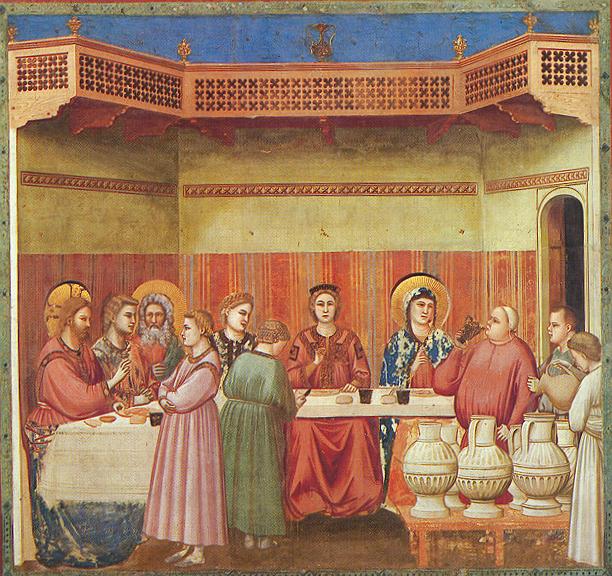
- Jesus is not placed in the symmetrical center of the painting but at its left-side.
- the hierarchy from the divine to the profane is presented from left to the right.
- the center is taken by a crowned female whose dominant magical (mudra) gesture and presentation with legs wide open makes her appear as the ruler of the house.
- The way she is depicted may be examined as a resonance with the Cancer (motherhood, conception, earth mother) resonance of the location (Scrovegni Chapel in Cancer with Libra.)
- This central lady may be understood as the house holder in charge – possibly the bride grooms mother. She is flanked by Mother Mary in a heaven-related blue gown and another relatively blond female obviously presented as of minor rank in the hierarchy of females which is probably supposed to be the bride.
- while the brides role is marked as unimportant through her being concealed by another servant the groom is allowed full energy company by the illuminated Jesus and St. Peter who bless his marriage and the future of his family with their presence at his wedding.
- St. Peter is depicted as fully concentrated on what Jesus is doing.
- it may be examined in which regards this ornamental depiction of sociological backgrounds and thei hierarchies are projections from the early 14th century point of view.
- Jesus is performing a blessing magical gesture doing is work of healing of the circumstances. He is either giving the blessing to the lady that stands before him or else working the miracle of the transformation of water into wine or both.
- the role of the lady is either that of an energy medium or of a servant sent out to ask Jesus to help the guests out with some wine.
- there is a direct resonance between Jesus and Mary in two ways: Mary is helping Jesus in his energy healing work by doing the same gesture. And both are the only ones that enjoy direct association with the heavenly lapis lazuli powder blue – making it the symbol of heaven. in
Scrovegni Chapel in astrogeography
Giotto and his team covered all the internal surfaces of the chapel with frescoes depicting the life of the Godmother and of Jesus including the walls and the ceiling. The shift from the traditionally golden to the even more expensive lapis lazuli based sky-blue backgrounds was an innovative if not revolutionary step made by Giotto and his team at Scrovegni chapel.

- Astrogeographical position of the small Scrovegni Chapel for morphogenetic field level 4 (exact position) which describe the church itself: one coordinate is in service-orientated, aristocratic, courtly air sign Libra the sign of love relationships, parties, openness for relationship, angels, harmony, balance, symmetry, justice, beauty, naive painting, decoration of oneself and of the surroundings, partners, marriage, prostitution, mirrors, dancing and of empathy. Libra stands for the ideal of high culture and for places of such, like aristocratic, royal or courts or courts of justice.
- The 2nd coordinate of the site is in emotional water sign Cancer the sign of the moon, motherhood, fertility, pregnancy, the uterus, feeling at home, springs, beaches, crabs emotional receptivity, reflection and perception and of emotional individuality and independence, For the last two decades my conclusion from astrological field study has been that Cancer represents the basis and condition for the authenticity of dealing with the emotional reflection of the effects of modern architecture and art.
- At the time of the creation of Giottos innovative masterpiece here Scrovegni Chapel was a site that allowed and supported the modernity and innovation of painting. Important examples of such sites of innovative masterpieces of architecture are site of the Hagia Sophia in Cancer with Taurus and of the Pantheon building in Cancer with Sagittarius.
Paolo Veronese`s Renaissance Painting
The “Wedding Feast at Cana” painting by Paolo Veronese completed in 1563 was financed by the House of Medici. Its size is 9,90 m × 6,66 m. Insights into Veroneses attitude towards his work in “religious” and church-paid painting can be taken from his explanations given during an appearance before an Inquisition Tribunal in Venice on July, 18th 1573.
An attempt for a description of works of art surely is the best way to start any interpretation of works of art. Getting a clearer image of its components can help to distinguish between its factually existing features and the reflexes, associations, resistances, diversions worked by our personal emotional or mental conclusion and judgement. It is a test for astrological investigation too.

- a conventional image of a figure that can be concluded to represent an image of Jesus marked with a halo is placed right in the center of the painting. Technically it serves as a definition of a horizontal axis of symmetry around which the whole scenery is arranged.
- though Jesus is formally starring the situation his and his mothers inconvenience is depicted similar to that of the marriage couple on the left end of the table with the pure bride molested by an evil neighbor.
- Jesus eyes are staring out of the scene and situation right at the observer of the picture. No depiction of his involvement in the miracle of turning water into wine is visible.
- to his left sits a lady with a halo of minor brightness wearing a nuns habit. Her eyes seem to stare through any material object and away from the situation in an expression of dull subjugation to the sufferings from duty and obligation.
- the arrangement of Jesus` position trapped beneath a balustrade and the vertical axis of the long supper table to which his 12 apostles are attached follows the ornamental pattern and hierarchy of Leonardo da Vincis painting “The Last Supper” created between 1495 and 1498.
- this makes Veroneses painting a comment on that of Leonardo.
- the contrasts of Veroneses decorative painting with the archetypal Christian supper table shown by Leonardo 70 years earlier have to be analyzed for exploration of Veroneses intentions, message (if any) and circumstances.
- I dont see how one could get away without a closer examination of the degree of difference and corruption in the dealing with Christian spiritual motives between the timing of Da Vincis painting in 1498 and that of Veroneses post-reformation era in 1563 here.
- the fact that Veronese worked a comparison of the incident of the Wedding Feast at Cana with that of the Last Supper alone makes his painting a critical statement on the biblical stories and by the ways of caricature, exaggeration and distortion under circumstance of strict formal patterns.
- not a single one of the depicted personnel wears a smile or any trait of happiness. Because of the uniformity of this trait of the painting the information transported through the absence of happiness, joy, fun or bliss depict the sociocultural circumstances of their prohibition.
- it can not be said that the painting actually depicts the Marriage Feast incident as such nor the miracle performed by Jesus as described in the Gospel of John.
- the allusion to the biblical story is reduced and worked here by the presentation of commonly used symbols: a Jesus and a Mary prototype figure along with several jugs are enough details do point at the biblical story.
- it was a surprise for me to find that there is in fact no explicit attempt made here to visualize the miracle itself nor that it is worked by Jesus.
- the symmetrical axis of roman architecture that flanks the perspective transfers the depicted event away from Galilee right into the arrangement of a fake Italian setting.
- even the states of “illuminations” of Jesus and the lady depicted as a nun puppet appear to be under the spell of these formal arrangements. Though apparently fully confronted with the absurdity of that scenery the depicted Jesus and Mary are trapped in the framing of public obligations – despite their knowledge of the magic of transformation of physical objects from the state of water into that of wine.
- the overall message that I get here is that Veronese presents how Jesus and Mary feel disgusted with the Christian religion, Catholic church, and the cultural and social conditions in his contemporary Italian society,. And to a degree in which no miracle can help them out.
- I am mot saying that this message is fully explicit here. And I am sure that many people might just content themselves with admiring decorative structures and intense colors. But just because the ambiguity and schizophrenia of modern society and culture is not confronted does not mean that healing through religion of our spirituality is at work.
- and anyway astrological analysis has to attempt to recapitulate the fuller meaning of any images.
Planetary transits during the completion in 1563 and the Zeitgeist
During the year 1563 Pluto (248 years cycle), Neptune (165-years cycle) and Uranus (84-years cycle) as the most important planetary indicators for the “Zeitgeist” (spirit of the age) under which the painting was created transited the following positions:
The coincidence of the year of completion of this late Renaissance painting with a conjunction of Saturn and Jupiter can be examined as a hint at its potential as a document of a climax of stabilization of elements of form and of its aim of creating a kind of a “classical work” for whatever purposes it was worked for.

- Pluto the ruling planet of Scorpio transited ca. 15° in Pisces delivering a straight resonance with the Pisces – Scorpio resonance aspect of the site of the destination of the painting at the refectory in San Giorgio Maggiore for which it was created. Plutos Renaissance transit through Pisces occurred between 1552 and 1577.
- Plutos role in astrological conclusion here is to serve as the planetary indicator for patterns of perception, behavior, role conduct and dominant ideology during that period. Pluto so stands for collective and individual deficiencies through acquired patterns.
- The Zeitgeist stimulated by Plutos transit through Pisces is therefore to be examined in regard to patterns of perception in regard to the Pisces` role as the resonance sign of imagination, illusion, dreaming, spirituality and the subtle plane, outer space, sea-water, re-connection with god, Italian culture, drinking wine and of music.
- Neptune as the sign ruler of Pisces and planetary ruler over the current transit of Pluto was at ca. 8° in Gemini the sign technology, communication, learning, road crossings, interfaces and bringing opposites together.
- Uranus the planet of revolution, abstraction and self-liberation made his ingress into Sagittarius the sign of style, design, fashion, ornamentation, composition, observation, thinking and the priest castes indicating a period of design revolution and of holistic abstraction of the perspectives on style, design and fashion.
The Painter Paolo Veronese

- Painter Paolo Veronese (Paolo Caliari) was born in 1528 (exact date unknown) in Verona.
- Pluto as one of the 3 major systemical planetary indicators for the Zeitgeist and ruler of Scorpio, sculpting, imaging, art production, hierarchy, visualization, patterns of role conduct and belief systems was at ca. 25° in Capricorn the sign of state cult, tradition, history, government, stability, bones.
- transiting Pluto is currently (2021) exactly returning to the position during Veronese`s birth year. His exact position on 2 November 2021 is 24° Capricorn.
- Neptune (drinking wine, spirituality as the essence of religion, dream world) as ruler of Pisces at ca. 15° Pisces the sign of drinking alcohol, the essence of spirituality, imagination, holistic re-connection conjunct Chiron the ruler of Virgo and planet of self-healing, self-treatment and optimal use of resources.
- Uranus (innovation, revolution, abstraction) in Gemini (sketching, learning, communication, teaching, technology, display)
Astrogeographical Position of the painting in Pisces with Scorpio
Paolo Veroneses painting was created for the refectory (dining room) at the monastery San Giorgio Maggiore on a small island in the laguna of the city of Venice.

ph: Sergey Ashmarin, ccbysa3.0
- Astrogeographical position for field level 1 (region) describing the global resonance of the City of Venice: 29°Gemini – 20°Pisces
- Astrogeographical position of the exact refectory of the Monastery San Giorgio Maggiore for morphogenetic field level 4 (exact position – size of fields: ca. 80 x 150 m) that describes the energetical quality of the refectory at San Giorgio Maggiore: in water sign Pisces: spirituality, mystification, imagination, relaxation, drinking wine, party, recreation, dreaming and an ideal energetical factor for restaurants and bars. The 2nd resonance coordinate lies in solid, fixed water sign Scorpio the sign of bunkers, strongholds, art-production, sculpting, visualization, imaging, photography.
Current location of Veroneses painting at the Louvre in Paris
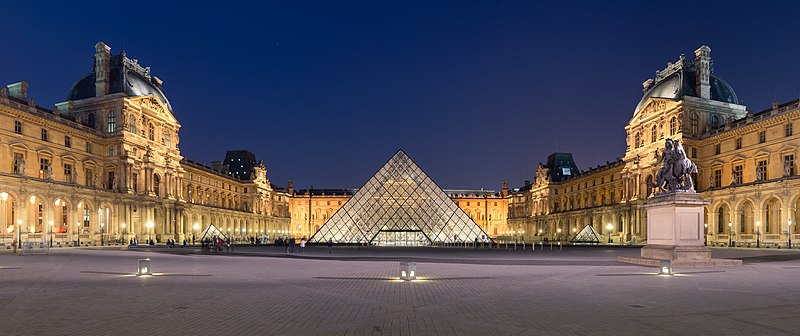
- Astrogeographical Position of the Louvre Museum for morphogenetic field level 3 Felderebene 3 (surrounding area – ca. 1000 m x 1800 m field size): Pisces (holistic re-connection, music, art, outer space, entertainment) and Gemini (information, learning, roads).
- The astrogeographical correspondence of the Louvre with the sign combination of Pisces-Gemini is a direct resonance with the Pisces-Gemini of the City of Venice.
- the painting was stolen from Venice by Napoleons forces as a consequence of the Fall of the Republic of Venice to France and Austria on 12 May 1797.
- Neptune was at 10°Scorpio the sign of rulership of Pluto triggering the Pisces-Scorpio resonance aspect of the original destination of the painting,
- Uranus (Revolution) was at ca. 15°Virgo (conservation, protected places),
- Pluto (trauma, pain, destruction) was at 28°Aquarius (the climax degree of cultural revolutions) exactly conjunct the 27°Aquarius astrogeographical resonance position of Paris.
Leonardos Da Vinci`s Painting “The Last Supper”
Leonardo da Vincis mural painting The Last Supper covers an end wall of the refectory at the monastery of Santa Maria delle Grazie in Milan, Italy.
- Leonardo da Vincis painting “The Last Supper” was designed as an attempt to visualize Jesus and his 12 disciples in the design and clothes of their times. That is the initial and biggest difference between the topics of Da Vinci and Veronese.
- The 13 depicted individuals are differentiated through reflection of information from different sources about their assumed characters and their attitudes and roles in relation to the group of apostles.
- It places Jesus at the center of the vertical axis of symmetry with the 12 disciples organized in groups of 3 – a structure that corresponds with the division of the solar year into 4 seasons and the astrological system of houses into the 4 bodies: material (Aries, Taurus, Gemini), emotional (Cancer, Leo, Virgo), mental (Libra, Scorpio, Sagittarius) and spiritual (Capricorn, Aquarius, Pisces).
- Leonardo is assumed to have worked on the painting between 1495 and 1498.
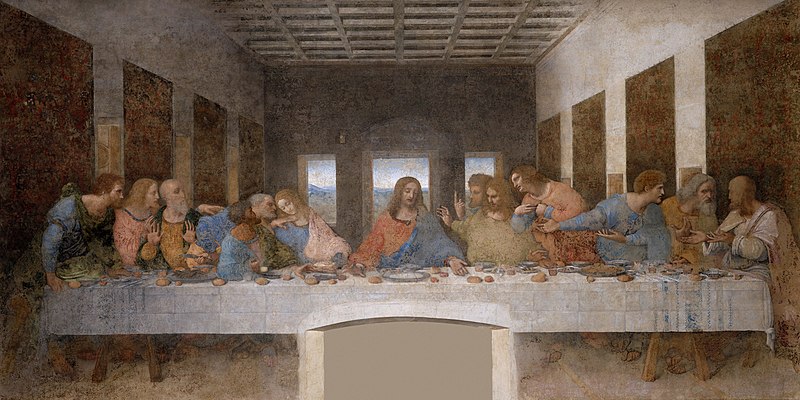
- Astrogeographical position of the site of the refectory at the Convent of Santa Maria delle Grazie for morphogenetic field level 4 (exact position) which describes the energetical topics and atmosphere of the site itself: the site has both resonance coordinates in emotional water sign Cancer the sign of the moon, motherhood, fertility, pregnancy, the uterus, feeling at home, springs, beaches, crabs emotional receptivity, reflection and perception and of emotional individuality and independence, For the last two decades my conclusion from astrological field study has been that Cancer represents the basis and condition for the authenticity of dealing with the emotional reflection of the effects of modern architecture and art.
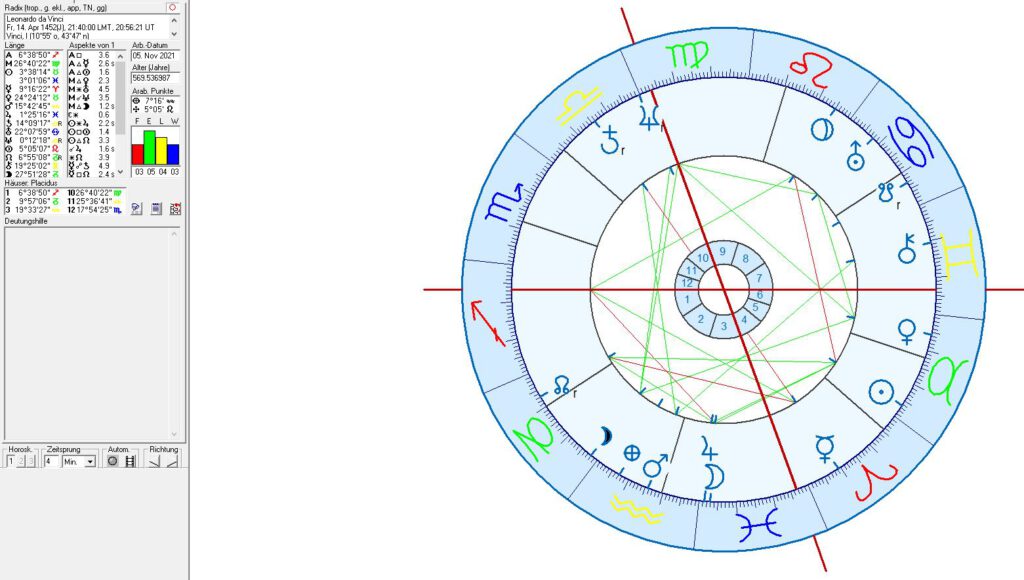
Leonardos personal karmic issues of development in regard to dealing with the fashions and psychological issues of the Zeitgeist were:
- Leonardo was born with Pluto the main indicator for the Zeitgeist of art production, sculpting, visualization and of acquired and habitual patterns of perception in Leo the sign of the sun, light, human self-expression, personal emotional fulfillment, emancipation from religion, magnificence, .
- Neptune the indicator for the true self and holistic re-connection with spirituality was on the cardinal divide between earth sign Virgo the sign of reason and air sign Libra the sign of harmony, balance, beauty, symmetry, decoration and stage presentation.
- Uranus the indicator for self-finding, self-liberation, rebellion and inspiration was in emotional water sign Cancer the sign of emotional individuality,independence and authenticity and of modernity in art.
Leonardos individual karmic issues as shown by the personal planets:
- his ascendant in Sagittarius the sign of thinking, philosophy, shamanism, style, design, fashion and of luxury indicates that success orientation was the first reflex and approach to handling and dealing with the challenges of survival.
- the most important aspect in regard to his motives and attitude in art lies in the conjunction of the Moon with his ascendant ruler Jupiter on the 2nd and 3rd degrees (degrees of drowning) of holistic, spiritual water sign Pisces the sign of the unknown, unconscious, imagination, dreaming, music, and art.
Veroneses Version of “The Last Supper” under the title “The Feast in the House of Levi”
Paulo Veroneses 1573 Venetian version of the biblical incident of the Last Supper before the crucifixion of the Christ was created 10 years after his “Wedding Feast at Cana”. It was one of several versions of that incident created by Veronese – and probably the most obviously political one.
The 13,09 m wide and 5,60 m tall oil painting was painted on one of the largest canvases of the 16th century for the refectory of the Basilica di Santi Giovanni e Paolo.
The work was originally painted under the title of The Last Supper, to replace an earlier work by Titian of this subject destroyed in the fire of 1571. But Veronese had to change the title to “The Feast in the House of Levi” and make other changes after having to appear before an Inquisition Tribunal on 18 July 1573. During the routine inquiry the inquisition objected to details like the depiction of German soldiers who were supposed to represent the Lutheran reformation and seriously demanded that a dog should be replaced by a Mary Magdalene.
The biblical incident of the Feast in the House of the Jewish high priest Levi is when Christ announces that one of his disciples will betray him. The change of titles served to cover up the fuller impact of the depicted criticism by transferring it away from the contemporary Catholic church and onto the Jewish clergy at times 1600 years back. The use of Jewish backgrounds for covering up contemporary corruption is symptomatic of the

- I suggest that the painting has to be read as Veroneses version of the Last Supper not of the Feast of the House of Levi.
- Veronese continues to copy and quote the formal pattern from Leonardos famous painting through using the icon of a Jesus as the symmetrical center of a long dinner table onto which the 12 apostles are fixed like onto a coat hanger or nailed like onto a cross.
- at the same time the picture is packed with allusions to and obvious criticism of contemporary situations of the 16th century in Venice showing St Peter and Jesus with large humps of meat before them, an apostle picking his teeth with a fork, a lazy, a decadent high priest Levi in a red gown of the color of catholic Cardinals and heavy drinking scenery involving apostles obviously aimed at depicting chaos and corruption in the Catholic church and contemporary Italian society.
- a mixture of ancient Roman with contemporary Renaissance architecture is used as a scenery on which the depicted incidents from the New Testament are staged.
- the repetition of the dictate of formal, ornamental rules in a scenery of cultural chaos therefore appears as the factually core issue transported by the painting.
In 1573 the 3 outer (of the 12 systemical) planets that define the Zeitgeist of an era occupied the following signs:
- During his 28 years transit through Pisces between 1562 and 1578 Plutos transit was at around 25°Pisces (entertainment, corruption, minorities, imagination, fantasy, spirituality)
- Neptune (spirituality, holistic clearing) transited the cardinal degree of the summer solstice between Gemini (technology) and Cancer (emotional individuality & authenticity) marking a period of major change.
- Uranus` (rebellion, innovation) 7 year transit in Capricorn (formalism, state cult) was near the very center of the sign (15°)
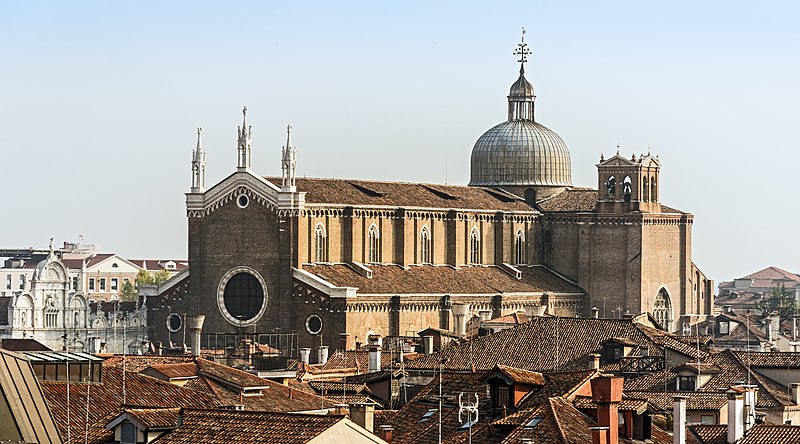
- Astrogeographical position of the site of the refectory at the Dominican Friary at Santi Giovani e Paolo in Venice for morphogenetic field level 4 (exact position) which describes the energetical topics and atmosphere of the site itself: the site for wich Veroneses painting was created has one coordinate in highly magnetic, royal fire sign Leo the sign of the sun, light, magnificence and the appeal for large, prominent, important and impressive works of art. The 2nd coordinate is in highly imaginative, spiritual water sign Pisces the sign of imagination, mystification, mythology, fairy-tales, illusion, dreaming, music, art, meditation, temples, drinking wine, intoxication and entertainment.
- The combination of Leo (light) with Pisces (outer space) indicates a temple of light built into a background of the darkness of empty space . The two signs Leo and Pisces are the most important resonance signs of temples for bars and restaurants. Compare: Florence Cathedral, The cathedral of Brasilia, Khandariya Mahadeva Temple at Khajuraho, Sanam Luang, Dambulla Cave Temple.
Veronese`s 1585 version of the “Last Supper”

- Veroneses 1585 version of the Last Supper is a counter model to his infamous 1573 painting
- instead of being aligned under dominance of strict formalism – the apostles are depicted having left their seats in movement and full emotional turmoil.
- Jesus is on the corner of the table and intensely working on blessing his friends.
Tintorettos “Wedding Feast at Cana” at Santa Maria della Salute
Jacopo Robusti named Tintoretto was born in Venice in late September or early October 1518. His work is identified with the Venetian school and with Mannerism. His version of the “Wedding Feast at Cana” was created in 1561 which was before before Paolo Veroneses version of 1563. That really surprised me because I felt that his painting looks far more modern, vivid, realistic and more advanced concept of art as well as of depiction of individuality of character.
- Tintoretto was born with the Sun and Jupiter in Libra the sign of stage presentation, decoration, harmony, balance, justice and beauty.
- Jupiter was near 5°Libra in exact square to a conjunction of Pluto with Saturn between 3° and 5°Capricorn

- Tintorettos version of the “Wedding Feast at Cana” contradicts the typical front-side arrangement of Leonardo da Vincis last supper table and the use of gaudy colors in Paolo Veroneses version based upon Da Vincis symmetrical design it in several ways.
- Tintorettos work has the focus on a real life scene instead of presentation a geometrical design a
- Tintoretto makes use of the darker, more realistic colors used of the Flamish masters.
- He places Jesus at the end of the long table where he sits as the patron of the gathering.
- Jesus is depicted as not feeling easy and at home with the situation – and in a mild and rather depressed mood.
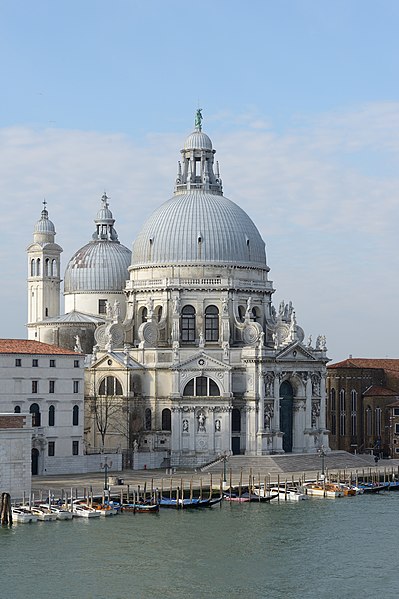
Dutch Painters
Jan Cornelisz Vermeyen`s painting in 1530
Jan Cornelisz Vermeyen was a widely travelled painter born in Beverwijk, North Holland ca. 1504.
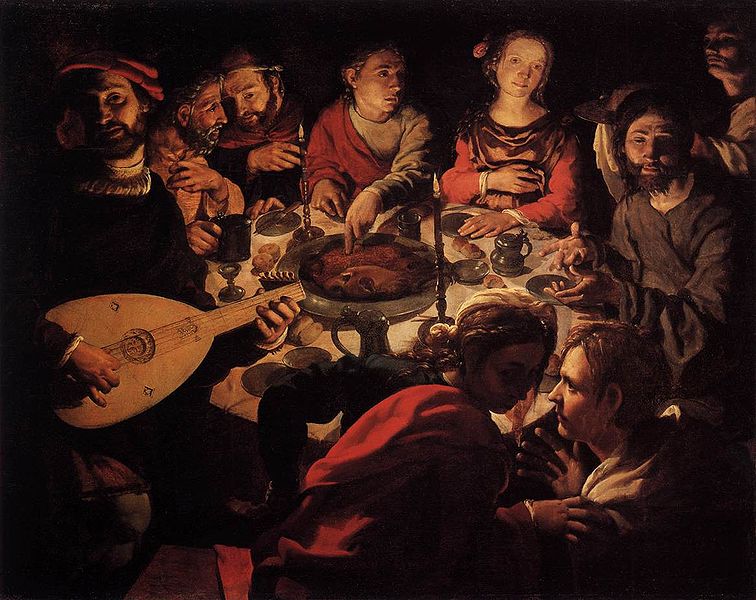
- The scene captured by Vermeyen is an intimate study of a small round table with no more than 8 people gathering in the glowing candlelight
Gerard David`s painting in ca 1500
The Early Netherlandish Painter Gerard David born in ca. 1460 in the town of Oudewater painted a version of the motive of the Marriage at Cana around 1500.
- Pluto was
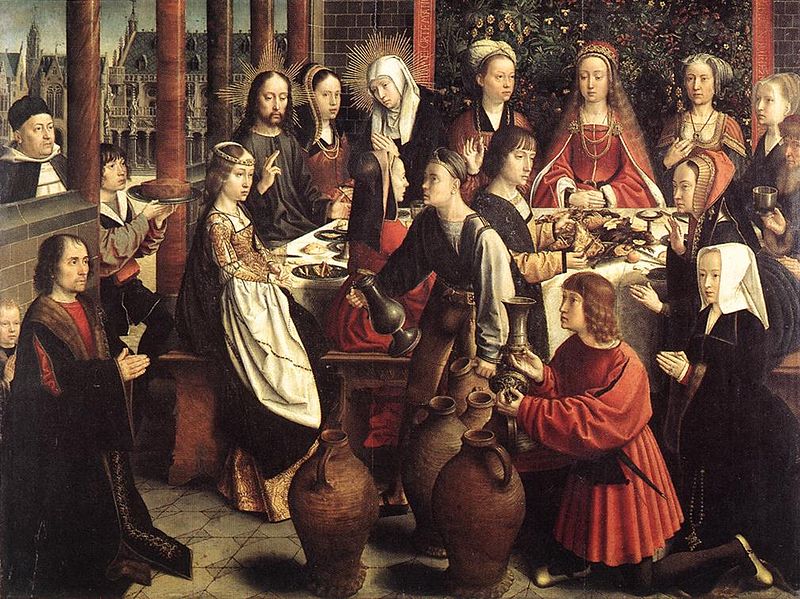
Marten de Vos` painting in ca 1595
